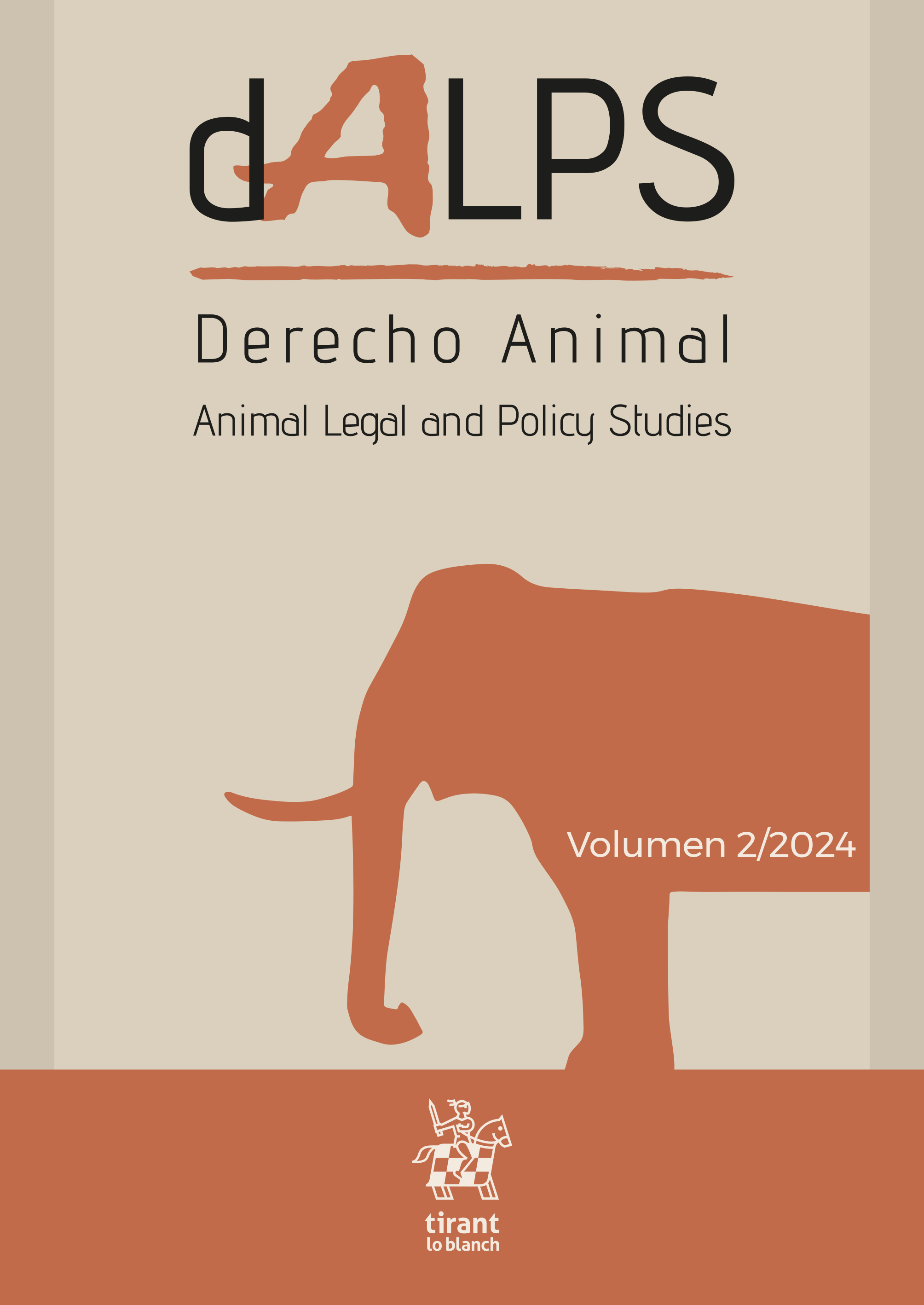Expectations for the configuration of the positive list of wild animals of Law 7/2023
DOI:
https://doi.org/10.36151/DALPS.032Keywords:
Law 7/2023, positive list of pets, procedure for preparing positive listsAbstract
This article delves into the study of the figure of the positive list or positive lists, introduced by the new Law 7/2023 of March 28, on the protection of the rights and well-being of animals. Firstly, a first approximation to the nature of the new Law 7/2023 is carried out, to then analyse what the positive list of animals consists of. This also allows explanation of the current second transitional provision, an essential precept since the entry into force of the standard until the future approval of the different positive lists through regulatory standards. Subsequently, we proceed with analysis of part of the relevant regional regulations to try to glimpse what meaning the future positive list of animals will have, taking into account the relatively recent entry into force of these regional regulations, and which can be considered a reference valid for the new state legal rank standard. Finally, we propose a procedure for preparing positive lists and an attempt is made to elucidate what, broadly speaking, the content of these positive lists should be, making special mention of those animals that could be considered dangerous due to their poison.
Downloads
References
CASADO CASADO, L. La protección del bienestar animal a través del ordenamiento jurídico-administrativo, en CUERDA ARNAU, M. L. (dir.), PERIAGO MORANT, J. J. (coord.) De animales y normas. Protección animal y derecho sancionador (Valencia 2021) 48 y 49.
GIMÉNEZ-CANDELA, M., CERSOSIMO, R. La enseñanza del derecho animal (Valencia 2021).
JIMÉNEZ CARRERO, J. A. La ley 7/2023, de 28 de marzo, de protección de los derechos y el bienestar de los animales: análisis y carencias. Revista de Derecho de la UNED 32 (2023) 207–230. https://doi.org/10.5944/rduned.32.2023.39908
PATO, S. ¿Se pueden tener animales exóticos en casa? ¿Cuál es la normativa? (21/09/2022) en Diario Público, en: https://www.publico.es/yo-animal/se-pueden-tener-animales-exoticos-en-casa-cual-es-la-normativa/ [última consulta: 27 de febrero de 2024].
Fuentes normativas
• La Ley de Protección de Animales de Cataluña (Decreto Legislativo 2/2008, de 15 de abril);
• Ley 9/2022, de 30 de junio, de Protección de los animales domésticos (País Vasco):
• La Ley Foral 19/2019, de 4 de abril, de protección de los animales de compañía en Navarra;
• Ley 4/2016, de 22 de julio, de Protección de los Animales de Compañía de la Comunidad de Madrid.
• Ley 7/2023, de 28 de marzo, de protección de los derechos y el bienestar de los animales (en línea): https://www.boe.es/buscar/act.php?id=BOE-A-2023-7936
Otras fuentes
• Coalición por el Listado Positivo está formada por las entidades de protección animal AAP Primadomus, ANDA y FAADA, (en línea): https://listadopositivo.org/conocenos/ (consulta de 12 de marzo de 2024).
• Eurogroup for Animals y AAP Primadomus: Piensa en positivo: Por qué Europa necesita “listados positivos” para regular el comercio y la tenencia de animales exóticos como animales de compañía (en línea): http://listadopositivo.hl1165.dinaserver.com/wp-content/uploads/2023/01/AAP-THINK-POSITIVE-BROCHURE-ES-2018-DEF.pdf (consulta de 12 de marzo de 2024).
• Ley 50/1997 de 27 de noviembre, del Gobierno (en línea): https://www.boe.es/buscar/act.php?id=BOE-A-1997-25336 (consulta de 3 de marzo de 2024).
• Ministerio para la Transición Ecológica: Catálogo Español de Especies Exóticas Invasoras, (en línea): https://www.miteco.gob.es/es/biodiversidad/temas/conservacion-de-especies/especies-exoticas-invasoras/ce-eei-catalogo.html (consulta de 23 de febrero de 2024).
Downloads
Published
How to Cite
Issue
Section
License
Copyright (c) 2024 DALPS (Derecho Animal-Animal Legal and Policy Studies)

This work is licensed under a Creative Commons Attribution-NonCommercial-NoDerivatives 4.0 International License.









